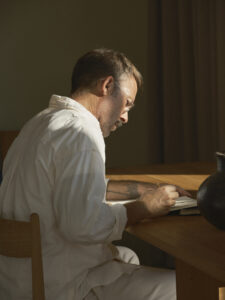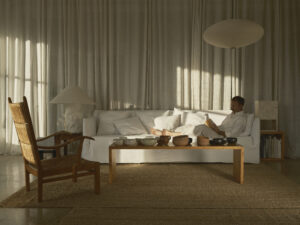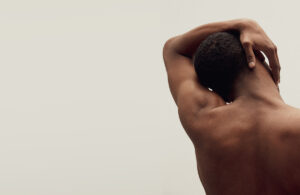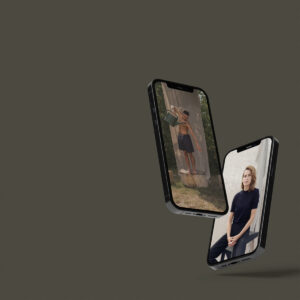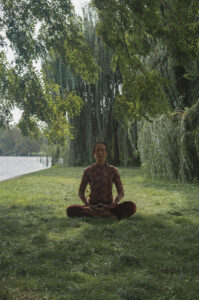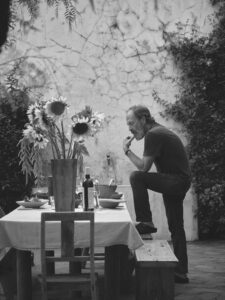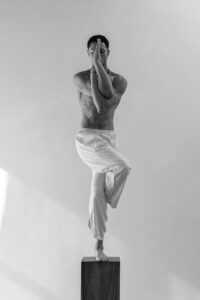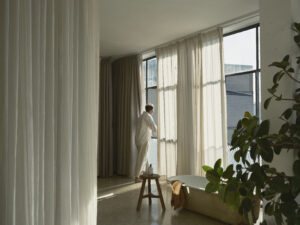
Join us on a journey with visionaries, as they share their very own stories.
Originally from the north of England, Andrew Trotter moved to Australia when he was sixteen, before making his start in architecture — first for Anouska Hempel in London, then iconic Japanese fashion designer Yohji Yamamoto and Persuade in Bilbao, before founding design boutique Openhouse in 2011 in Barcelona, where he still lives today. Trotter now runs his own eponymous studio, which handles international projects in the fields of architecture, interior design, product design and design consultancy. What unites Trotter’s various practices is simplicity, and “a true belief that any design should belong to the place where it is built”.
Trotter’s works such as Masseria Moroseta, which is simultaneously a hotel and a working farm, and Villa Castelluccio, a boutique holiday villa set amongst five acres of rural countryside and olive groves, are tributes to simplicity and traditional craftsmanship and have since become focal points of architectural interest in the Puglia region of Italy in which they’re located.
We like to design spaces, not to shock people or to be wild, but to be a place that becomes your refuge.
Calm is a common theme of Andrew’s work. It’s something he strives for not just in his professional practice, but also in his personal life, too. By working with open spaces, using traditional methods that result in pleasant forms, and by designing properties that work in harmony with their surroundings, his studio’s output is one defined by simplicity — and that simplicity has a soothing effect on those in his spaces. By perfecting each space to be what Andrew calls a “refuge for relaxation” — that is, a space where guests can come back to themselves, to disconnect from the hustle and bustle of daily life, and restore their inner balance and calm.
And when it comes to his personal life, Andrew strives to give himself space to return to his own moments of relaxation. Whether it’s through yoga, meditation and stretching, or cooking, gardening and walking in nature, Trotter emphasizes the importance of having space and time in which he can switch off and relax — his studio doesn’t work later than 6pm on most days, ensuring that he always has time to indulge in one of his favorite evening pastimes — ”watching trash TV.”
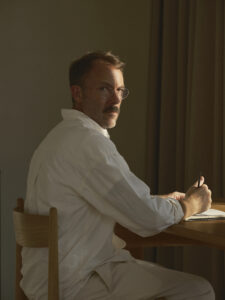
Our first major project was Masseria Moroseta in Puglia and I think it’s done so well because as soon as somebody arrives, they just feel at home straight away. It’s this six bedroom hotel and you don’t even feel like you’re in a hotel.
So we like to design spaces, not to shock people or to be wild, but to be a place that becomes your refuge, a place to share, a place to enjoy and a place to relax. This is the main focus of our work.
We spend a lot of time getting to know the clients, so for us designing is not about showing off or getting something very well publicised. Even if our work is well publicised, it’s more about making the client happy — especially as we’re doing a lot of holiday homes.
When you go away and when you have a holiday home, you want to take yourself away from real life. This is a place to disconnect, a place to go to be a part of nature, a place to enjoy cooking and to spend time getting back to yourself, rather than your work. It’s more about making sure that the person is living, being connected to themselves as well as being connected to the nature around them.
- Free guide on how to manage stress
- Science-backed insights and tips
- Traditional practices to manage stress
- Digital audio and video classes on demand
- Tips on more relevant lifestyle diseases Weekly guidance and health tips
Mainly simplicity. We build simple places without being minimal because I think minimalism can be quite stressful, because when you have a minimal place, you worry that everything is out of place and everything needs to be looking perfect. My places don’t need to look perfect. We make sure that the sofa isn’t only beautiful but that it’s very comfortable and you can lie down there and take a siesta. That there’s many places to sit, places to cook in a very rough way. You don’t have to be a perfect cook.
A lot of our work is in Puglia where everybody wants a white house and white houses seem very Mediterranean in their feeling and when you think of the Mediterranean you think of relaxing, you know. When you look at the traditional buildings in Puglia or in Greece, they’re minimal architecture but they were done 400 years ago and they were just building for their lifestyle. But that lifestyle is the lifestyle that people are wanting these days. People are wanting to grow out their own tomatoes and have vegetables in the garden and that type of thing. And I think this comes through back to having a healthier lifestyle, I think covid played a lot to this. People realised they don’t have to have this stressful life going to the office every day, that they can still work and they can still get by.
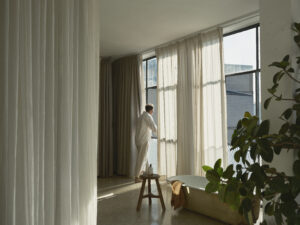
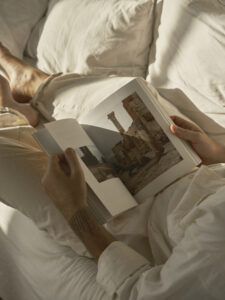
Good architecture is always very calming. But I think most people like to live with things and I like to make places that are not so architectural and a bit warmer in textures and materials and have nice ceramics around, and wicker chairs that have been made by hand, that type of thing.
I lived in London for 13 years and people say, oh, London is so stressful. But actually for me, I had my bike, I had my job and I didn’t find it very stressful. Especially when most people in London live in a house with a garden attached, you know? It’s not a very dense population.
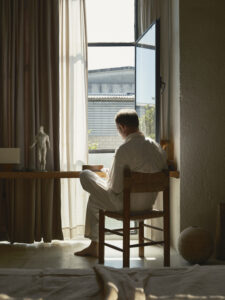
One of them is to think more carefully about the products that you buy. There’s a lot of good design out there, for instance I love furniture by Carl Hansen because they do good design, but it’s also quite handcrafted. But I love going to markets, finding antiques and finding vintage pieces. Here in Spain, in Italy, in Mexico you have amazing artisans that are making simple furniture by hand and you can tell it’s gonna have simplicity and a well-made feel to it.
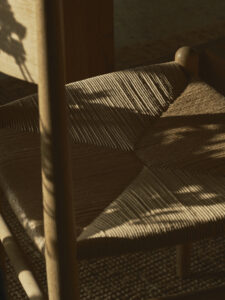
I think we can all work on ourselves. I think sports, meditation, yoga, this type of thing is very good for people, but I think probably even better is cooking or just taking time for yourself at home to do things that are not necessarily spiritual. It’s more about doing things that can become a ritual, which is like cooking — you cannot be working while you’re cooking, you have to concentrate on what you’re doing and that’s a therapy in itself. If you are able to grow your own vegetables to cook and everything like that, even better. Gardening I think is a wonderful thing.
Walking is another thing that can give you time to yourself without having to do the sort of typical things that we think of releasing ourselves, like yoga or meditation. A good long walk in the countryside is an amazing thing. You’re connecting with nature. You’re connecting with your friends that you’re walking with, or with yourself. You’re thinking about what’s around you, rather than thinking about your work.
The other thing I love is to cook in the evening and I love my two hours of trash TV. Often we meet friends for lunches or dinners and I think it’s very healthy to have a good social life, and I spend a lot of time on my own. I love to be on my own as well. I have my spinning bike so I do 40 minutes of spinning, maybe four times a week.
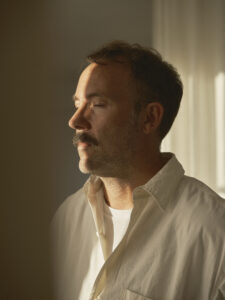
My two hours of TV at night is quite a ritual. I have a hernia, I’ve had it for about 20 years. So every morning I do stretching and I think this is a very good way to start the day. It’s not so much meditation per se, but I’m stretching and focusing on my breathing at the same time. This is a very nice way to start the day. I usually do that after my coffee in the morning, and I like my half an hour coffee in the morning.
